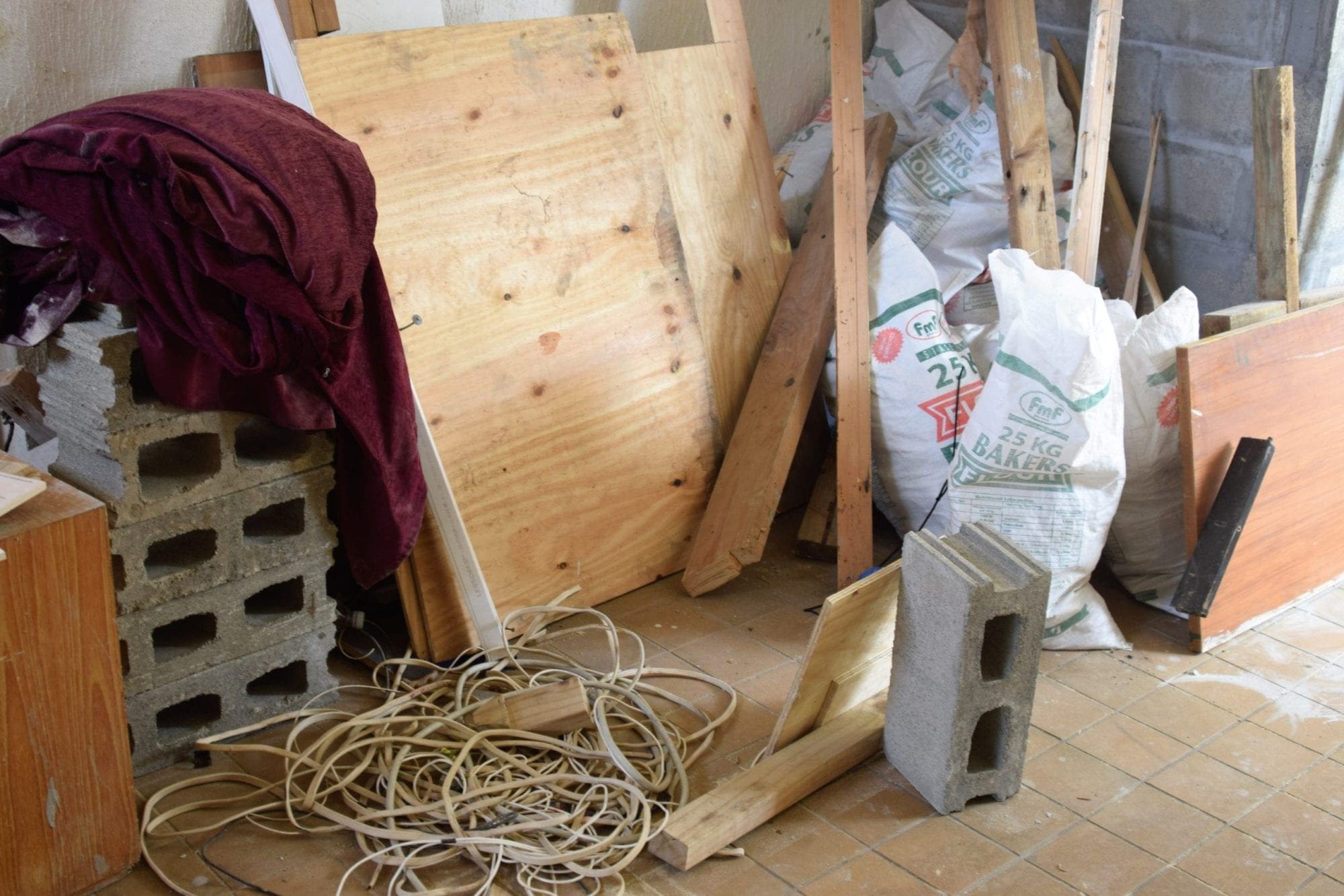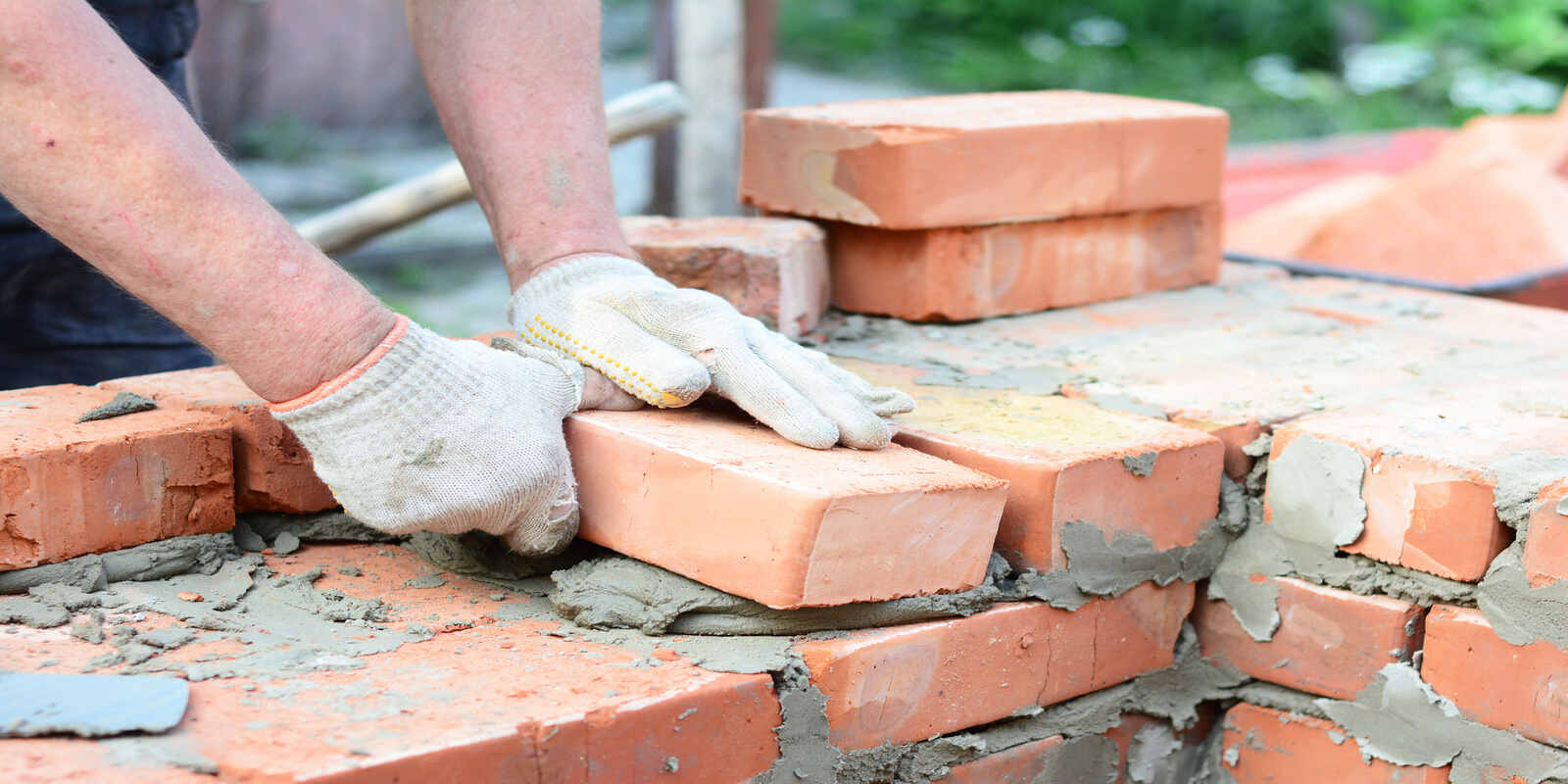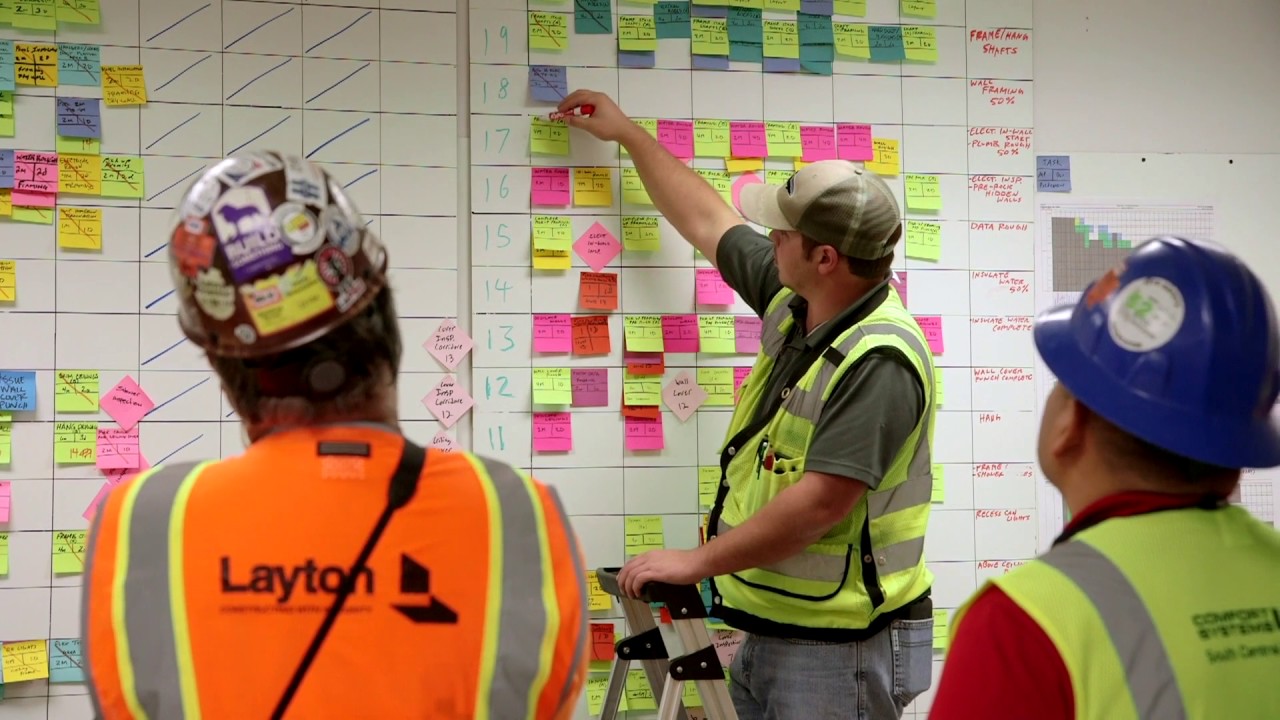Home>diy>Building & Construction>What To Do With Leftover Construction Materials


Building & Construction
What To Do With Leftover Construction Materials
Modified: January 6, 2024
Discover creative ways to repurpose your leftover construction materials and minimize waste. Find out how to make the most of your building-construction leftovers.
(Many of the links in this article redirect to a specific reviewed product. Your purchase of these products through affiliate links helps to generate commission for Storables.com, at no extra cost. Learn more)
Introduction
When it comes to construction projects, there are often leftover materials that can be challenging to deal with. Whether it’s excess lumber, concrete, tiles, or other building materials, finding the right way to handle them is essential for both environmental sustainability and cost efficiency.
Fortunately, there are several options available for dealing with these leftover construction materials. They can be reused, recycled, donated, sold, or repurposed, depending on their condition and the needs of the project. By choosing the most appropriate approach, construction professionals can not only reduce waste but also contribute to the circular economy and make a positive impact on their communities.
In this article, we will explore the various ways in which leftover construction materials can be managed effectively. From reusing and recycling to donating and repurposing, we will provide insights on the best practices and strategies that can be implemented to minimize waste and maximize value.
If you find yourself with leftover construction materials, read on to discover how you can turn them into assets rather than liabilities and contribute to a more sustainable construction industry.
Key Takeaways:
- Reduce waste and save money by reusing leftover construction materials for future projects or repurposing them for smaller construction tasks, contributing to a more sustainable and cost-effective construction industry.
- Contribute to environmental conservation and community support by donating, selling, or repurposing leftover construction materials, promoting creativity, sustainability, and responsible waste management within the construction industry.
Read more: What To Do With Leftover Trex Decking
Reusing Leftover Construction Materials
One of the most sustainable and cost-effective options for dealing with leftover construction materials is to reuse them. Reusing materials not only reduces waste but also saves money by minimizing the need to purchase new materials.
Before embarking on a construction project, it’s important to carefully plan and estimate the required materials. However, there are often unforeseen circumstances that result in excess materials. These materials can be repurposed for future projects or used in different parts of the current project to save resources.
If you have leftover lumber, for example, consider using it for smaller construction projects such as shelves or furniture. Pieces of wood can also be cut down and used as blocking or shims. Additionally, leftover bricks, tiles, or concrete can be used for landscaping purposes such as creating paths, patios, or garden borders.
When reusing materials, it’s crucial to ensure they are still in good condition and meet the necessary specifications for the intended purpose. Inspect the materials for any damages or defects that could compromise their structural integrity. If in doubt, consult with a construction professional or engineer to assess their suitability.
Another method of reusing construction materials is through deconstruction. Instead of demolishing a building and disposing of all the materials, the process of deconstruction involves carefully dismantling the structure and salvaging reusable components. This approach allows for the recovery of valuable materials such as doors, windows, fixtures, and even structural elements like beams and columns.
Before reusing materials, it’s important to ensure that they are properly cleaned, repaired, and prepared for their new purpose. This includes removing any nails, screws, or other fasteners, as well as addressing any damages or imperfections. By reusing construction materials, you can significantly reduce waste and contribute to a more sustainable construction industry.
Recycling Leftover Construction Materials
Recycling is another effective way to manage leftover construction materials and minimize waste. By diverting these materials from landfills, recycling not only reduces the environmental impact of construction but also conserves valuable resources.
There are various materials commonly found on construction sites that can be recycled, including concrete, asphalt, metal, wood, plastics, and more. Recycling processes for each material may differ, so it’s important to familiarize yourself with the recycling options available in your area and follow the proper guidelines.
Concrete is one of the most commonly recycled construction materials. It can be crushed into aggregate and used as a base for new roads, sidewalks, or as a component in the production of new concrete. Similarly, asphalt can be recycled by pulverizing it and incorporating it into new asphalt mixes.
Metal, such as steel and aluminum, is highly recyclable. By collecting and recycling metal scraps, you can help conserve energy and reduce the demand for raw materials. It’s important to separate different types of metals to ensure a more efficient recycling process.
Wood waste from construction sites can also be recycled. Clean wood scraps can be ground into wood chips for mulch, used in biomass energy production, or even repurposed for furniture or crafts. However, it’s important to separate treated or painted wood from clean wood, as they may require different recycling methods.
For plastics, it’s crucial to properly segregate and sort them according to their classifications. Some plastics can be recycled into new products like plastic lumber, drainage pipes, or packaging materials. However, it’s essential to check the plastic identification codes to determine whether they are recyclable and to ensure they are properly cleaned before recycling.
When it comes to recycling leftover construction materials, it’s important to establish a recycling program on the construction site. Provide separate containers or bins to collect different types of recyclable materials and clearly label them. Educate and train workers on the proper procedures for recycling and make it a priority to include recycling in the project’s waste management plan.
By recycling construction materials, you can contribute to the circular economy and reduce the environmental impact of the construction industry. Be proactive in seeking out local recycling facilities and explore partnerships with recycling companies to ensure that your leftover construction materials are properly recycled.
Donating Leftover Construction Materials
Donating leftover construction materials is not only a sustainable option but also a way to give back to the community. Many nonprofit organizations, charities, schools, and community projects can benefit from donated construction materials to support their missions. By donating these materials, you can help reduce waste and assist those in need.
One of the first steps in donating construction materials is to identify potential recipients. Research local nonprofit organizations that may have a need for the specific materials you have available. This can include organizations focused on affordable housing, community development, education, or other related areas.
Reach out to these organizations to discuss their needs and determine if your leftover materials would be a good fit. Some organizations may have specific guidelines or requirements, so it’s important to understand their donation process. They may ask for details about the materials, such as quantity, condition, and specifications, to assess whether they can utilize them effectively.
When donating construction materials, transparency is key. Provide accurate information about any potential limitations or issues with the materials. For example, if there are slight defects or missing components, be upfront about it. This helps organizations determine whether they can still use the donated materials or if they need to make any necessary repairs or adjustments.
Proper packaging and transportation of the donated materials is also essential. Ensure that the materials are securely packed, labeled, and protected during transportation to avoid any damage. If the materials are too large or heavy for you to handle, consider partnering with a logistics company or reaching out to the recipient organization for assistance.
Donating leftover construction materials not only benefits nonprofit organizations but also provides you with a tax deduction opportunity. Consult with a tax professional to understand the specific regulations and requirements for claiming a tax deduction for your donation.
By donating your excess construction materials, you can make a positive impact on your community while reducing waste and contributing to a more sustainable construction industry. Your generosity can help support valuable community projects and provide resources to those who need them the most.
Consider donating leftover construction materials to local charities, schools, or community organizations. Many of these groups can put the materials to good use for building or renovation projects. It’s a great way to reduce waste and help others in need.
Selling Leftover Construction Materials
If you have leftover construction materials that are in good condition and can be used by others, selling them can be a practical option. By selling these materials, you not only recoup some of your project costs but also provide an opportunity for others to acquire affordable construction materials.
The first step in selling leftover construction materials is to evaluate their condition and determine their market value. Consider factors such as age, quality, and market demand for the specific types of materials you have available. Conduct research to gauge the current prices for similar materials in your area to set a fair and competitive price.
Utilize online platforms or local classified ads to reach potential buyers. Websites dedicated to buying and selling construction materials, as well as social media groups or forums focused on construction and home improvement, can provide a targeted audience for your listings. Include detailed descriptions, specifications, and clear photographs of the materials to attract potential buyers.
When negotiating with potential buyers, be open to reasonable offers while ensuring that you receive a fair price for your materials. Consider offering discounts for bulk purchases or providing incentives to buyers who can pick up or transport the materials themselves, reducing your logistical efforts and costs.
Ensure a smooth transaction process by establishing clear communication with buyers. Respond promptly to inquiries, address any concerns or questions they may have, and arrange for convenient pick-up or delivery options. Keep accurate records of the sales transactions, including receipts and any agreements made, for future reference.
By selling leftover construction materials, you not only recover some of the costs but also contribute to sustainable resource management. Rather than letting the materials go to waste or disposing of them inappropriately, selling them gives them a chance to be used and appreciated by others.
Remember to always adhere to local laws and regulations when selling construction materials. Depending on your location, there may be specific permits or licenses required, particularly for certain materials or quantities. Consult with local authorities or legal professionals to ensure compliance with all necessary regulations.
Selling leftover construction materials not only benefits you financially but also supports the construction community by providing affordable options for others in need of materials. It’s a win-win situation that helps reduce waste and promotes sustainable practices within the construction industry.
Repurposing Leftover Construction Materials
Repurposing leftover construction materials is a creative way to give them a new purpose and extend their lifespan. By repurposing these materials, you can add unique and interesting elements to your projects while minimizing waste and promoting sustainability.
Start by examining the leftover materials and brainstorming potential uses for them. For example, reclaimed wood can be transformed into decorative wall panels, furniture, or even art installations. Concrete blocks or bricks can be turned into garden planters or outdoor seating. Get creative and think outside the box to find innovative ways to repurpose the materials.
Consider incorporating repurposed materials into your new construction projects. Salvaged doors, windows, or fixtures can add a vintage touch and unique character to a building. Repurposed materials can also be used for decorative elements or structural features that showcase sustainability and creativity.
When repurposing materials, it’s important to ensure that they are still structurally sound and meet the necessary safety requirements. If any modifications or repairs are needed, consult with a construction professional or engineer to ensure that the repurposed materials will perform safely and reliably in their new form.
Repurposing construction materials can also be a great DIY project. If you enjoy working with your hands, consider using leftover materials for smaller home improvement projects. Reclaimed wood can be turned into shelves, tables, or picture frames. Tiles or scraps of flooring can be used for mosaic projects. Get creative and let your imagination guide you in repurposing these materials into functional and stylish items.
Furthermore, repurposing construction materials contributes to a circular economy and reduces the demand for new resources. By giving these materials a new life, you contribute to the conservation of natural resources and minimize the environmental impact of construction.
When repurposing materials, be sure to properly clean and prepare them. Remove any nails, screws, or other fasteners and address any damages or imperfections. This will ensure that the repurposed materials are ready to be used in their new form and provide a safe and functional result.
Repurposing leftover construction materials not only adds a unique and sustainable touch to your projects, but it also showcases your creativity and commitment to environmental responsibility. Embrace the opportunity to repurpose these materials and unleash your imagination to create something truly remarkable.
Proper Disposal of Leftover Construction Materials
While the goal is to minimize waste and find alternative uses for leftover construction materials, there are instances where disposal is necessary. It’s essential to follow proper disposal practices to ensure that these materials do not harm the environment or pose any risks to human health.
Before disposing of any construction materials, it’s important to identify any hazardous substances that may be present. Many construction materials, such as paints, solvents, adhesives, and insulation, may contain harmful chemicals. These materials should not be disposed of with regular waste or sent to landfills.
Check local regulations and guidelines to determine the proper methods for disposing of hazardous materials. Contact your local waste management authorities to inquire about specific requirements or programs for the safe disposal of these materials. They may provide designated drop-off points or scheduled collection events where hazardous construction waste can be properly disposed of.
For non-hazardous construction materials, proper disposal methods can vary depending on the type of material. It’s crucial to segregate different types of materials to facilitate recycling or proper disposal. Separate materials like concrete, wood, metal, plastics, and other non-hazardous waste into specific containers or bins to facilitate recycling or disposal at the appropriate facilities.
Recycling facilities may accept certain leftover non-hazardous construction materials for processing. Check with local recycling facilities to determine if they accept materials like concrete, asphalt, metal, or wood for recycling. If recycling options are not available, consult with waste management authorities to identify approved disposal methods.
Dumping construction materials illegally is not only harmful to the environment but also illegal. Avoid disposing of materials in unauthorized areas such as empty lots, natural areas, or bodies of water. Not only can this result in fines and legal consequences, but it also contributes to environmental degradation.
If you are unsure about the proper disposal methods for specific construction materials, consult with waste management authorities or seek the assistance of professional disposal services. They can provide guidance on how to handle and dispose of materials safely and legally.
Remember that proper disposal of leftover construction materials is crucial to preserve the environment and protect public health. By following the appropriate guidelines and adhering to local regulations, you can ensure that any waste generated from your construction projects is disposed of responsibly and in an environmentally-friendly manner.
Conclusion
Dealing with leftover construction materials is a critical aspect of sustainable construction practices. By implementing effective strategies for managing these materials, construction professionals can reduce waste, conserve resources, and make a positive impact on both the environment and the community.
Reusing leftover construction materials is a cost-effective option that not only minimizes waste but also provides opportunities for future projects. Whether it’s repurposing wood for furniture or deconstructing buildings to salvage reusable components, reusing materials helps extend their lifespan and reduces the need for new resources.
Recycling leftover construction materials is another valuable approach to sustainable waste management. By diverting materials from landfills and incorporating them into new products or construction projects, recycling helps conserve resources and reduces the environmental impact of the construction industry.
Donating leftover construction materials allows for their redistribution to organizations and projects in need. By supporting community initiatives, affordable housing efforts, or educational programs, donating materials not only reduces waste but also contributes to the betterment of society.
Selling leftover construction materials provides an opportunity to recoup costs while offering affordable options to those in need of materials. By finding buyers who can benefit from these materials, you not only recover value but also promote the reuse and repurposing of resources.
Repurposing construction materials showcases creativity and sustainability. By giving materials a new life and purpose, you add unique elements to projects and contribute to the circular economy.
Finally, when disposal becomes necessary, it’s crucial to follow proper procedures. Identify any hazardous materials and dispose of them safely and appropriately. Segregate non-hazardous materials for recycling or disposal at approved facilities to minimize their environmental impact.
In conclusion, effectively managing leftover construction materials is a multifaceted endeavor that requires careful planning, creativity, and adherence to proper practices. By reusing, recycling, donating, selling, repurposing, and properly disposing of these materials, construction professionals can promote sustainability, reduce waste, and contribute to a more environmentally-friendly industry.
Remember, the choices made regarding leftover construction materials have a direct impact on the environment, the community, and the future of construction. Embrace the opportunity to make a positive difference and strive for sustainable practices in the construction industry.
Frequently Asked Questions about What To Do With Leftover Construction Materials
Was this page helpful?
At Storables.com, we guarantee accurate and reliable information. Our content, validated by Expert Board Contributors, is crafted following stringent Editorial Policies. We're committed to providing you with well-researched, expert-backed insights for all your informational needs.















0 thoughts on “What To Do With Leftover Construction Materials”